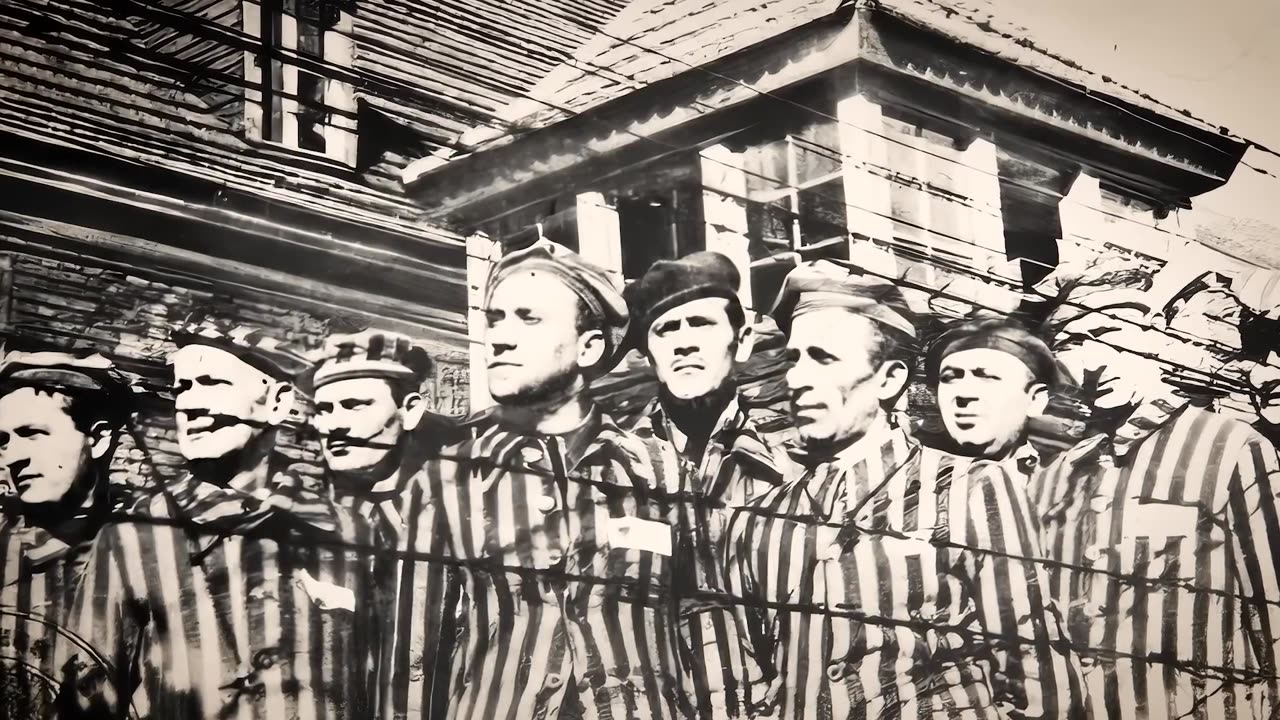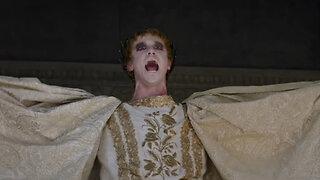Premium Only Content

Auschwitz: Unveiling the Nightmare of Human Experimentation
As the dawn of 1940 cast long, ominous shadows across the Polish countryside, a dreadful construction was being erected amidst the peaceful landscape, one that would soon become an emblem of humanity's darkest hour - Auschwitz. Built under the merciless command of the Third Reich, this concentration camp emerged as a chilling testament to the unthinkable horrors born of prejudice, hatred, and utter disregard for human life.
Under the grim guise of 'racial purification', thousands of innocent lives were stripped of their dignity, subjected to brutalities that defied comprehension. At the epicenter of this was Josef Mengele, infamously known as the 'Angel of Death'. As a physician at Auschwitz, Mengele carried out unspeakable experiments on the helpless prisoners, often without the use of anesthesia, under the twisted banner of scientific research.
But have you ever pondered over the chilling details of these experiments? How was it possible for such horrific acts to be conducted in broad daylight, under the watchful eyes of the world?
Elie Wiesel, a Holocaust survivor and laureate of the Nobel Peace Prize, once remarked, "To forget the dead would be akin to killing them a second time." As we traverse the sorrowful chapters of Auschwitz, we owe it to the memory of those lost to confront the unsettling reality of the Holocaust. Join us as we delve into the sinister labyrinth of Auschwitz, unveiling the horrifying experiments conducted within its cold, unfeeling walls. Welcome to the diary of Julius Caesar.
Auschwitz Emerges. The Shadow Over Poland.
As the year 1940 dawned, the whispers of a new and ominous structure began to spread across the Polish lands. Auschwitz, originally known as Konzentrationslager Auschwitz, was conceived in the minds of Heinrich Himmler and Rudolf Höss, two men whose names would forever be etched in the annals of humanity's darkest period.
The chosen site for this facility, situated near the town of Oświęcim in Southern Poland, was a paradox of pastoral beauty and impending doom. Its strategic location at the crossroads of major railway lines made it an ideal place for the mass movement of people - a cruelly practical consideration for the Nazi regime's deadly intentions.
Rudolf Höss, a man with a stern demeanor and a chilling loyalty to the Nazi cause, became the first commandant of Auschwitz. Selected by Heinrich Himmler himself, Höss was instructed to create a concentration camp that would set a precedent for all others. As the bricks were laid and the fences erected, few could have envisioned the monstrosity that Auschwitz would become.
What had once been a Polish army barracks was transformed into a place of despair under the hands of prisoners transferred from Sachsenhausen, a concentration camp in Germany. As Auschwitz's first inmates, these individuals were coerced into constructing the very walls that would confine them. A fascinating yet tragic anecdote tells of a prisoner who, with the clandestine use of a smuggled camera, managed to capture images of the camp's early days. These photographs, concealed for years, now serve as an important testament to Auschwitz's grim genesis.
00:00 Auschwitz
1:39 The Shadow Over Poland
5:18 The Dreadful Metamorphosis
8:41 An Ordinary Day in Extraordinary Circumstances
11:51 The Art of Endurance in Auschwitz
15:55 The Twisted Science of Josef Mengele
19:22 The Dark Economy of Forced Labor
22:50 Starvation and Survival in Auschwitz
26:13 Living in the Shadow of Punishment
29:58 The Silent Resilience of Auschwitz's Women
32:56 Victims, Survivors, and Tormentors
35:41 The Unseen Battle within Auschwitz
37:45 The Bitter Freedom of Auschwitz
40:50 The Echoes of the Past in Today's Silence
-
 2:43:07
2:43:07
RG_GerkClan
5 hours agoLIVE: Lets Get to 500 FOLLOWS! - Escape From Tarkov - Gerk Clan
14.7K3 -
 LIVE
LIVE
Vigilant News Network
19 hours agoHillary Clinton EXPOSED In Another Massive Hoax | The Daily Dose
1,937 watching -
 1:00:17
1:00:17
Trumpet Daily
1 day ago $5.65 earnedRINOs Are Trump’s Biggest Enemy Now - Trumpet Daily | Nov. 22, 2024
7.49K19 -
 17:47
17:47
RealReaper
14 hours ago $0.19 earnedGladiator 2 Another Pointless Sequel
3.23K2 -
 45:45
45:45
PMG
12 hours ago"Hannah Faulkner and Stephanie Nash | No Farms No Food"
2.7K -
 27:11
27:11
Degenerate Plays
1 day ago $0.12 earnedReturn Of The Online Girlfriends - Stellar Blade : Part 30
2.18K -
 7:16
7:16
SeasonofMist
2 days agoSOLSTAFIR - Fjara (Official Music Video)
1.71K2 -
 3:54
3:54
Good Kid Productions
9 days agoTrump just broke legacy media. We're building something better.
1.59K -
 3:13:17
3:13:17
Boxin
6 hours ago(Rumble push to 50 Followers!) (alerts Working...?) Spoopy Month!!!! Resident Evil 7 Biohazard 4
74.3K2 -
 2:26:35
2:26:35
Father Russell
6 hours agoThrone and Liberty | Morning Stream
43.2K1